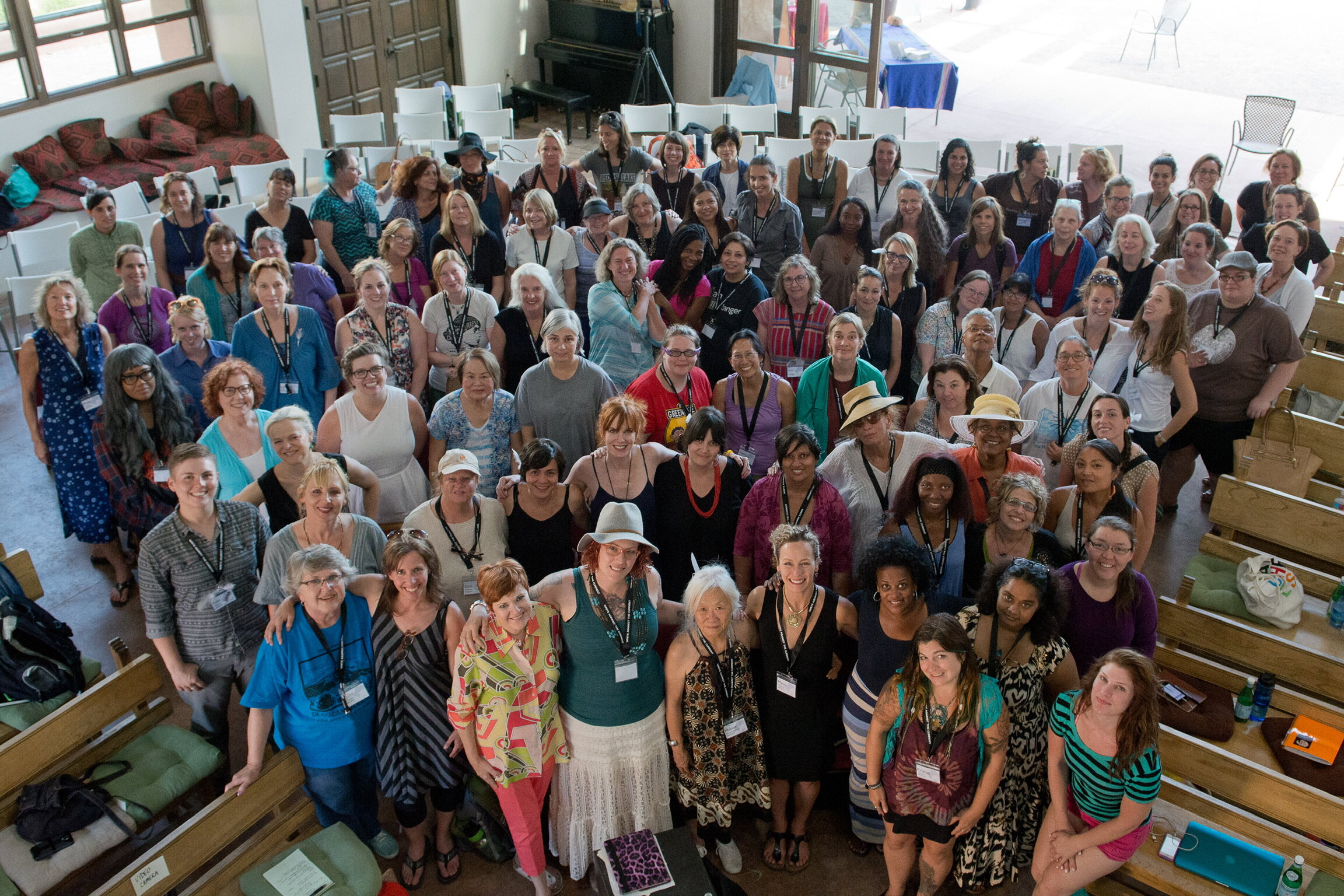
Mary’s Story
From nun to atheist
Mary Johnson is the author of An Unquenchable Thirst, named one of 2011’s best nonfiction books by Kirkus Reviews and awarded the New Hampshire Literary Award for Outstanding Work of Nonfiction. After spending 20 years as a nun with the Sisters of Mother Teresa of Calcutta, she completed an MFA in Creative Writing at Goddard College and helped found A Room of Her Own Foundation. She married. Mary now considers herself a secular Humanist and has written for The New York Times, The Washington Post, USA Today, O the Oprah Magazine, The Huffington Post, Bloomberg View, Religion News Services, and National Public Radio. Mary’s work has been featured on CNN, MSNBC, Salon.com, Poets & Writers, The Los Angeles Times, The Daily Beast, and The Rosie Show, among others.
As a Humanist Celebrant, Mary creates unique ceremonies for weddings, funerals, and other rites of passage, and has twice been voted New Hampshire’s top wedding officiant. After the success of her first book, Mary is working on a podcast, video series and a new book. She is enjoying writing about the brain, the mysteries of consciousness, and the illusion of the self — so understand that while everything in this bio is true, it’s an illusion to think all this belongs to Mary.
How the journey began
Mary has always been a writer and a seeker. In high school she was the editor of the school newspaper and a nationally ranked public speaker and debater. At 17 she thought she was on the path to a career as a communicator when she spotted Mother Teresa on the cover of Time magazine. As she read her story, she felt God calling. Armed with a teenager’s stubborn conviction, she left Texas for the South Bronx to become one of Mother Teresa’s Missionaries of Charity.
Within weeks of her arrival in the convent, Mother Teresa told the 12 aspiring nuns in Mary’s class (speaking of herself in the third person as was her wont), “Mother has promised to give Saints to Mother Church.” Becoming a nun wasn’t easy. Mary watched as 10 of her companions left the convent within the first six months. While disheartened, Mary was a headstrong girl energized by a challenge. In 1980 in Rome Mary professed her first religious vows. From there Mother Teresa sent her to the South Bronx, then to new foundations in Washington DC and in Winnipeg, where she taught children from the inner cities, worked in soup kitchens, and opened a shelter for homeless women and children. Though Mary loved the work, the community’s myriad rules began to feel suffocating.
Eventually writing came back into Mary’s life when she was entrusted with the updating of the Constitutions of the Missionaries of Charity, the group’s governing document. She researched a thesis that established her as an expert on Mother Teresa’s spirituality and began teaching her fellow sisters throughout Europe. Sisters found Mary’s enthusiasm for a Missionary of Charity’s life of love and service contagious. Mother Teresa appointed her to guide sisters prior to their religious vows, a position Mary held for six years while her unrest grew stronger.
As she yearned for personal intimacy, intellectual freedom, and the opportunity to make a creative contribution, the community demanded self-denial and unquestioning obedience. Mary’s superiors (particularly two who increasingly filled the power vacuum created by Mother Teresa’s declining health) seemed intent on keeping her in her place. Buttressed by authority and well-oiled by obedience, the MC system imposed silence in God’s name and provided no mechanism for genuine accountability. The day Mary told Mother Teresa of her plans to leave the Missionaries of Charity after 20 years as a nun, Mother’s eyes—so full of pain—searched Mary’s face, “Mother could believe this about anyone, but she cannot believe it about you.”
What does life look like after 20 years as a nun?
Finding her way after 20 years in the convent wasn’t easy, but Mary was tenacious and had help. Her sister took Mary in, bought her a swimsuit, helped her open a bank account. Her brother-in-law taught her how to pump gas and operate a microwave. Mary sold clocks, ironed clothes, taught Italian, attended college and worked as a receptionist in a doctor’s office.
In 2000, she was ready to share her story. Together with Darlene Chandler Bassett, she launched A Room of Her Own Foundation to help other women writers.
In Mary’s words, “I found myself questioning previous assumptions, including my beliefs about God. I fell in love. I fell apart. Between panic attacks and bouts of depression, I published my work in periodicals and on National Public Radio. Finally, after a long spiritual struggle, I found I had outgrown my religious faith. I let go.”
An evolved philosophy
Mary continues to find the world a marvelous place and tries her best to treat others well. She continues to invest in community, knowing that respectful, affectionate bonds formed among human beings are among life’s most precious gifts, whether in churches, mosques, gyms or bars, schools or shops, or synagogues.
Mary Johnson lives in Nashua, New Hampshire with her husband. She enjoys hiking, gardening, and riding her bike. She continues to help other people tell their stories. She is currently working on a podcast and writing about the brain. Her favorite place to write is at any of Nashua’s many downtown cafes, a cup of steaming tea beside her iPad.





